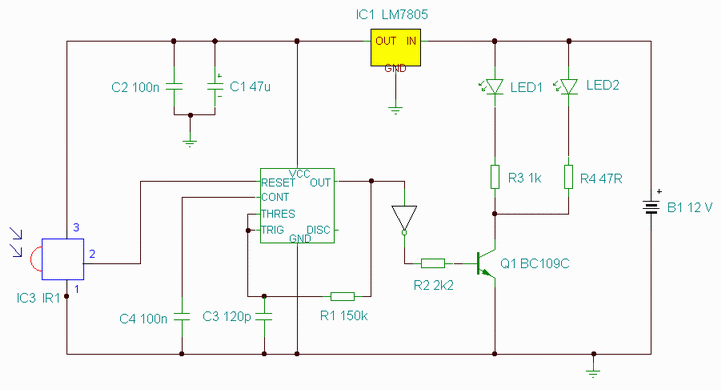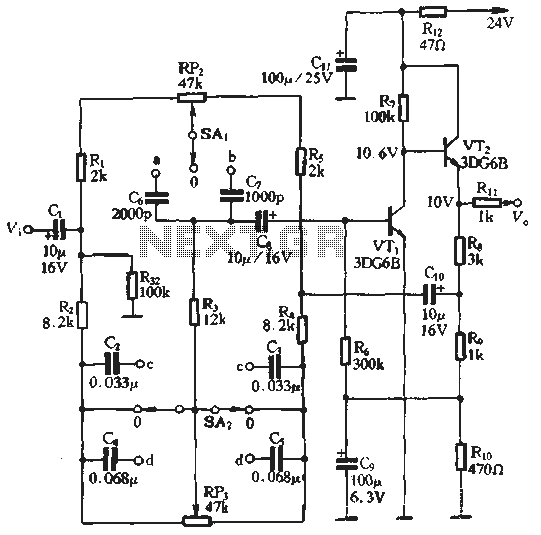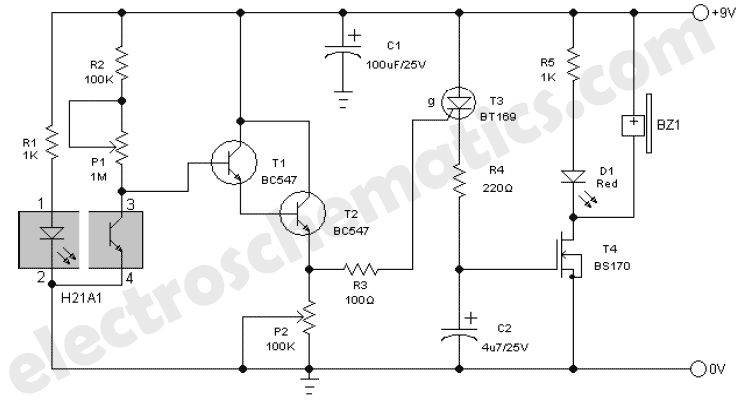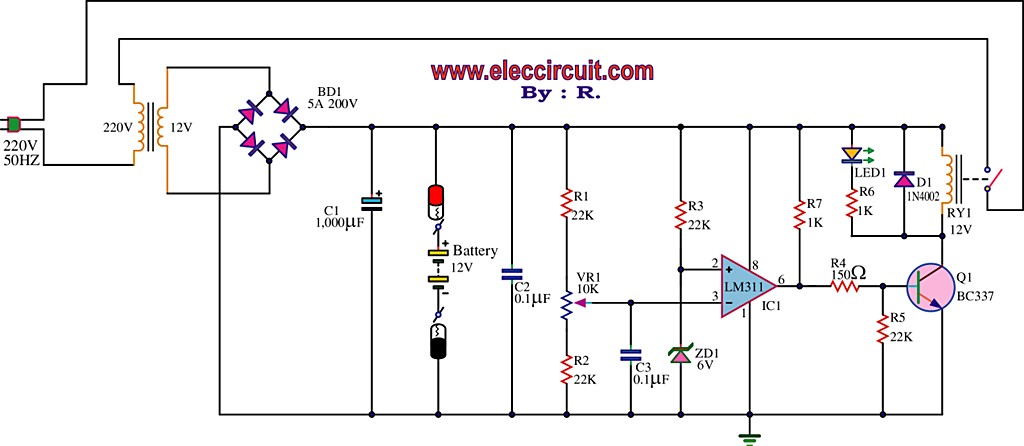
IR Remote Control Extender var 3 Circuit

The Mark3 version of the Infrared extender is specifically designed to control appliances that utilize high-frequency modulated infrared remote signals.
The Mark3 Infrared extender functions as a bridge between a standard infrared remote control and appliances that operate with high-frequency modulated IR signals. This device is essential in environments where traditional infrared signals may be obstructed or ineffective due to distance or physical barriers.
The circuitry typically includes a receiver that captures the incoming infrared signals from the remote control. This receiver is tuned to detect high-frequency modulated signals, which are often used in modern appliances for their improved performance and reduced interference. Once the signal is received, it is processed by a microcontroller that decodes the command.
The microcontroller then activates an infrared LED transmitter that emits the corresponding infrared signal towards the appliance. This ensures that commands such as power on/off, volume control, or channel selection are executed accurately, even from a distance or through obstacles.
Power management is a critical aspect of the design to ensure efficient operation. The device may incorporate voltage regulators and capacitors to stabilize the power supply to both the receiver and transmitter. Additionally, it may feature indicators such as LEDs to provide feedback on the operational status.
In summary, the Mark3 Infrared extender is a sophisticated device that enhances the usability of high-frequency modulated infrared remote controls, making it an essential component for seamless control of modern electronic appliances.This Mark3 version of the Infra Red extender is a special version designed to control appliances that use high frequency modulated IR remote. 🔗 External reference
The Mark3 Infrared extender functions as a bridge between a standard infrared remote control and appliances that operate with high-frequency modulated IR signals. This device is essential in environments where traditional infrared signals may be obstructed or ineffective due to distance or physical barriers.
The circuitry typically includes a receiver that captures the incoming infrared signals from the remote control. This receiver is tuned to detect high-frequency modulated signals, which are often used in modern appliances for their improved performance and reduced interference. Once the signal is received, it is processed by a microcontroller that decodes the command.
The microcontroller then activates an infrared LED transmitter that emits the corresponding infrared signal towards the appliance. This ensures that commands such as power on/off, volume control, or channel selection are executed accurately, even from a distance or through obstacles.
Power management is a critical aspect of the design to ensure efficient operation. The device may incorporate voltage regulators and capacitors to stabilize the power supply to both the receiver and transmitter. Additionally, it may feature indicators such as LEDs to provide feedback on the operational status.
In summary, the Mark3 Infrared extender is a sophisticated device that enhances the usability of high-frequency modulated infrared remote controls, making it an essential component for seamless control of modern electronic appliances.This Mark3 version of the Infra Red extender is a special version designed to control appliances that use high frequency modulated IR remote. 🔗 External reference





